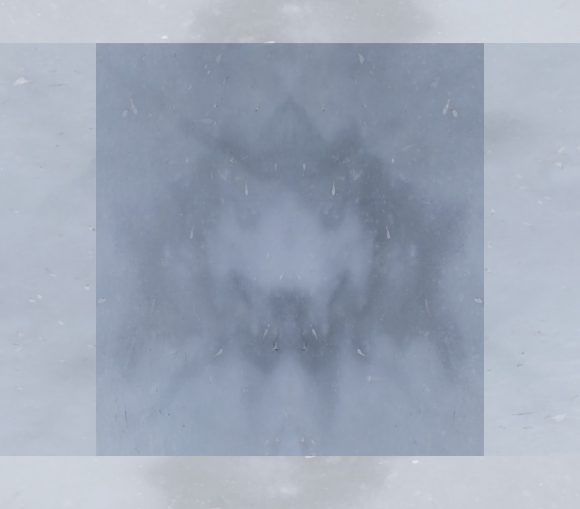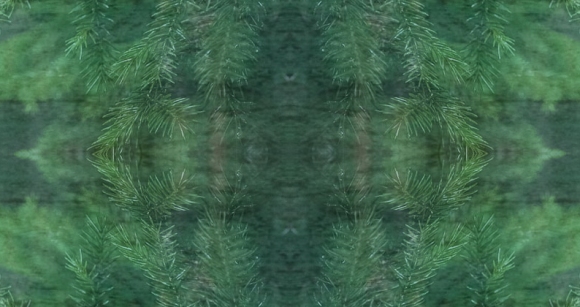When he writes about dreams, Hillman virtually never refrains from reminding us of the curious fact that we talk about them as if we were having them, but that we experience them as if they were having us.
In sleep, I am thoroughly immersed in the dream. Only on waking do I reverse this fact and believe the dream is in me. At night the dream has me, but in the morning I say, I had a dream. (DU 98)
This reversal of perspectives is not restricted to dreams. Jung says in the spirit essay:
[Man] has not created spirit, but rather the latter makes him creative; it gives him drive and fortunate ideas, persistence, enthusiasm and inspiration. But it penetrates human essence in such a way that Man is most severely tempted to believe that he has created spirit himself, that he has it. In reality, however, the archetypal phenomenon of spirit possesses Man […]
[Der Mensch] hat den Geist ja nicht selber erschaffen, sondern dieser macht, daß er erschafft; er gibt ihm den Antrieb und den glücklichen Einfall, die Ausdauer, die Begeisterung und die Inspiration. Aber er dringt so ins menschliche Wesen ein, daß der Mensch in schwerster Versuchung steht, zu glauben, daß er selber der Erschaffer des Geistes sei, daß er ihn habe. In Wirklichkeit aber nimmt das Urphänomen des Geistes den Menschen in Besitz […]
GW IX/I, §393.
When we generalize observations of this kind, we arrive at a fundamental tenet of both Jung’s and Hillman’s view of the relation between humans and psyche: that humans are in fact governed (even possessed) by the psychic phenomena, understood broadly (including, that is, spirit and dreams, fantasies and ideas, pathological symptoms, and so on), while being under the misperception that they (humans) are actually producing or controlling them. A correlate of this, of course, is the notion that much of the psychic phenomenon is collective, that is, in some sense shared at least among members of the species. But I think it goes much further than that. Thus Hillman declares:
Human does not enter into all of soul, nor is everything psychological human. Man exists in the midst of psyche; it is not the other way around. Therefore, soul is not confined by man, and there is much of psyche that extends beyond the nature of man. The soul has inhuman reaches. (RVP 173)
There are at least three claims here which we should keep apart.
First, there is the familiar Jungian idea that there is a collective level to the psyche, that in some sense all humans share in a common set of predispositions (archetypal dominants) which exert some influence and control on individual subjects. The collective psyche obviously extends beyond the personal psyche (the set of phenomena exhibited by an individual subject). Thus we might observe patterns of perception, behavior, etc. that occur with many subjects, over and over again. And patterns like these, in an obvious sense, transcend the individual: they have existed before the life span of the individual began, and will continue after their death; they often occur without the individual even realizing that they do (they are “unconscious”, i.e. may go on without conscious intention and avowal); and they may even be overpowering the subject’s will (i.e. they happen even if the person tries to avoid or deliberately break them).
Secondly, however, there is the idea that such patterns govern not only human perception and behavior, but can also be found in mythical narratives, i.e. are exhibited by gods and heroes; in dream scenes (including daydreams, fantasies, active imagination, etc.) and mystic visions; in creative works of art, i.e. they can be found in novel characters and poetic egos; even in symbol systems (such as alchemy, kabbalah, and so on). If we accept this perspective, we might infer that the set of predispositions that govern human perceptions and behavior (the first claim, above) also govern the behavior of gods and heroes, imaginary persons, dream visitors, etc. — and thus go beyond, not merely individual human persons, but human persons in general. We haven’t quite left the sphere of “the human”, however: for we might still see all of the non-human areas where we find the patterns (dreams, mythical narratives, …) as fundamentally products of human culture (invented by some human individuals, or at least developed in collaborative processes over time). The collective psyche, then, would extend the narrowly psychological (as in, say, the subject area of empirical psychology) and cover the cultural, broadly understood (as in the subject matter of what in the 20th-century was called “the humanities”).

But it is hard to reconcile this second idea with claiming that thus the psyche would have “inhuman reaches”, that there is “much in the psyche that extends beyond the nature of man”. If we find certain patterns of behavior not only in our neighbor, but also in a movie character, we haven’t thereby discovered something outside human nature. From the perspective of the second idea, as I have put it above, it is still more natural to say that the movie makers have simply expressed something general about human behavior by portraying a character in a way that conformed to the dominants. In fact, it seems likely that any movie which would portray its characters as not conforming to the dominants would be unconvincing — it would appear liveless, far-fetched, pretentious … Thus if the movie characters in fact do conform to the dominants, it is precisely because of human making (the moviemakers, knowing their craft).
Moreover, the very point of the perspective reversal — the flip from “having” to “being had” in the two quotes at the beginning of this post — seems to be a critical correction of human hybris: when humans think that dreams or the creative products of the spirit are of their making, they mistake something that happened to them (driven by the psyche) for something they did. The same applies to all those figures who might exhibit the archetypal dominants, too:
Just as we do not create our dreams, but they happen to us, so we do not invent the persons of myth and religion; they, too, happen to us. The persons present themselves as existing prior to any effort of ours to personify. […] imaginal persons […] are given with the imagination and are its data. (RVP 17; Hillman’s emphasis.)
So there must be a third idea, a metaphysical claim behind Hillman’s position. The “inhuman reaches” of the soul cannot be simply understood as human products, just “in a wider sense” (where concrete human behavior would be human, in the narrow sense, and the generalized behavior exemplified by literary figures, mythic gods, etc., would be human products in the wider sense). The “inhuman reaches” must refer to something distinct in kind from anything of “human nature” (Hillman). I take it that this is what Hillman means to say, and likewise, that this is what Jung pointed to in the spirit essay (from which the quote above was taken), when he talks about “spirit” as something ontologically apart from, and prior to, the human Wesen.




[…] we got sidetracked by the inhuman reaches of the soul, we looked at the curios reversal of perspectives that frequently happens in Jung and Hillman when they consider the relation between human beings […]
[…] Jung and Hillman both frequently make a move I have called “perspective reversal”: they make us aware that, while we believe that we “have” our dreams, actually the dreams “have” us. (And what goes for dreams goes for psychic items in general.) […]
[…] a rhetorical figure. It is a thought-move both Jung and Hillman frequently make, and which I have traced through various of their writings under the heading of “perspective reversal”. Let’s get a little clearer on what exactly those “perspectives” […]
[…] we want to take perspective reversal seriously, we have to revise some of the language we use. Rather than saying, for instance, I […]
[…] consequence of perspective reversal is that it helps us to correct a common […]
[…] the day world and the night world, Hillman makes yet another suggestion that is an instance of the technique of “perspective reversal”. This time it is about the shadow (in its Jungian understanding of the […]
[…] technique of perspective reversal, frequently as it is used throughout Hillman’s early work, is more than a neat rhetorical trick. […]